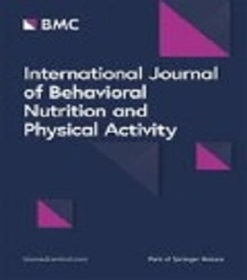Validation of actigraphy sleep metrics in children aged 8 to 16 years: considerations for device type, placement and algorithms
IF 5.6
1区 医学
Q1 NUTRITION & DIETETICS
International Journal of Behavioral Nutrition and Physical Activity
Pub Date : 2024-04-16
DOI:10.1186/s12966-024-01590-x
引用次数: 0
Abstract
Actigraphy is often used to measure sleep in pediatric populations, despite little confirmatory evidence of the accuracy of existing sleep/wake algorithms. The aim of this study was to determine the performance of 11 sleep algorithms in relation to overnight polysomnography in children and adolescents. One hundred thirty-seven participants aged 8–16 years wore two Actigraph wGT3X-BT (wrist, waist) and three Axivity AX3 (wrist, back, thigh) accelerometers over 24-h. Gold standard measures of sleep were obtained using polysomnography (PSG; Embletta MPRPG, ST + Proxy and TX Proxy) in the home environment, overnight. Epoch by epoch comparisons of the Sadeh (two algorithms), Cole-Kripke (three algorithms), Tudor-Locke (four algorithms), Count-Scaled (CS), and HDCZA algorithms were undertaken. Mean differences from PSG values were calculated for various sleep outcomes. Overall, sensitivities were high (mean ± SD: 91.8%, ± 5.6%) and specificities moderate (63.8% ± 13.8%), with the HDCZA algorithm performing the best overall in terms of specificity (87.5% ± 1.3%) and accuracy (86.4% ± 0.9%). Sleep outcome measures were more accurately measured by devices worn at the wrist than the hip, thigh or lower back, with the exception of sleep efficiency where the reverse was true. The CS algorithm provided consistently accurate measures of sleep onset: the mean (95%CI) difference at the wrist with Axivity was 2 min (-6; -14,) and the offset was 10 min (5, -19). Several algorithms provided accurate measures of sleep quantity at the wrist, showing differences with PSG of just 1–18 min a night for sleep period time and 5–22 min for total sleep time. Accuracy was generally higher for sleep efficiency than for frequency of night wakings or wake after sleep onset. The CS algorithm was more accurate at assessing sleep period time, with narrower 95% limits of agreement compared to the HDCZA (CS:-165 to 172 min; HDCZA: -212 to 250 min). Although the performance of existing count-based sleep algorithms varies markedly, wrist-worn devices provide more accurate measures of most sleep measures compared to other sites. Overall, the HDZCA algorithm showed the greatest accuracy, although the most appropriate algorithm depends on the sleep measure of focus.验证 8 至 16 岁儿童的动图睡眠指标:对设备类型、位置和算法的考虑
尽管几乎没有证据证实现有睡眠/觉醒算法的准确性,但动图法经常被用于测量儿科人群的睡眠状况。本研究旨在确定 11 种睡眠算法与儿童和青少年夜间多导睡眠图的性能关系。137 名 8-16 岁的参与者佩戴了两个 Actigraph wGT3X-BT(手腕、腰部)和三个 Axivity AX3(手腕、背部、大腿)加速度计 24 小时。在家庭环境中,通过多导睡眠图(PSG;Embletta MPRPG、ST + Proxy 和 TX Proxy)获得了通宵睡眠的金标准测量值。对 Sadeh(两种算法)、Cole-Kripke(三种算法)、Tudor-Locke(四种算法)、Count-Scaled(CS)和 HDCZA 算法进行了逐时比较。计算了各种睡眠结果与 PSG 值的平均差异。总体而言,灵敏度较高(平均值±标准差:91.8%,±5.6%),特异性适中(63.8%±13.8%),其中 HDCZA 算法在特异性(87.5%±1.3%)和准确性(86.4%±0.9%)方面表现最佳。与臀部、大腿或下背部相比,佩戴在手腕上的设备能更准确地测量睡眠结果,但睡眠效率除外,因为后者的情况正好相反。CS算法能持续准确地测量睡眠开始时间:手腕与Axivity的平均差异(95%CI)为2分钟(-6;-14),偏移为10分钟(5,-19)。几种算法都能准确测量手腕处的睡眠量,在睡眠时间方面,与 PSG 的差异仅为每晚 1-18 分钟,在总睡眠时间方面,与 PSG 的差异为 5-22 分钟。对睡眠效率的准确度普遍高于夜醒频率或睡眠开始后醒来的频率。CS 算法在评估睡眠时间方面更为准确,与 HDCZA 相比,其 95% 的一致性范围更窄(CS:-165 至 172 分钟;HDCZA:-212 至 250 分钟)。虽然现有的基于计数的睡眠算法性能差异明显,但与其他部位相比,腕戴式设备能更准确地测量大多数睡眠指标。总体而言,HDZCA 算法的准确性最高,但最合适的算法取决于重点测量的睡眠指标。
本文章由计算机程序翻译,如有差异,请以英文原文为准。
求助全文
约1分钟内获得全文
求助全文
来源期刊
CiteScore
13.80
自引率
3.40%
发文量
138
审稿时长
4-8 weeks
期刊介绍:
International Journal of Behavioral Nutrition and Physical Activity (IJBNPA) is an open access, peer-reviewed journal offering high quality articles, rapid publication and wide diffusion in the public domain.
IJBNPA is devoted to furthering the understanding of the behavioral aspects of diet and physical activity and is unique in its inclusion of multiple levels of analysis, including populations, groups and individuals and its inclusion of epidemiology, and behavioral, theoretical and measurement research areas.

 求助内容:
求助内容: 应助结果提醒方式:
应助结果提醒方式:


